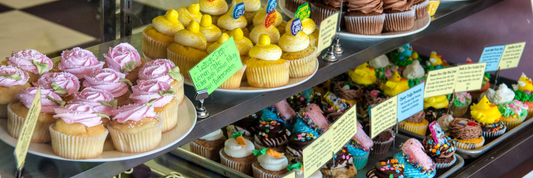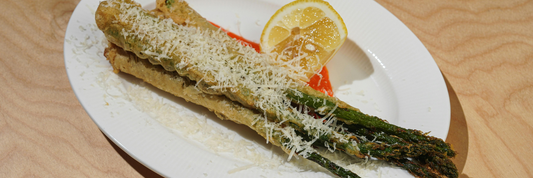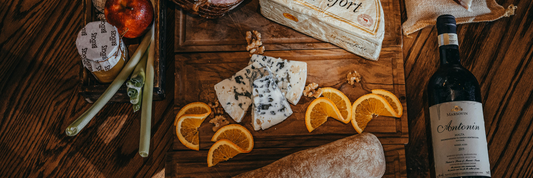When the winter air hits and customers crave the warmth of a steaming bowl of ramen, you know your kitchen has to perform on two fronts: deliver heat, and deliver taste. For operators of ramen shops, small F&B businesses or emerging chains, this seasonal shift isn’t just about more coats in the dining room—it’s about optimizing your entire service chain. At Kimecopak, we recognise that your commitment stretches beyond just food: it encompasses how your soup is delivered, how packaging works with your process, and how your brand stands for quality even in the cold.
In this article, we guide you whether you’re a ramen chef, kitchen manager or F&B operator through the winter‑specific operational challenges, the metrics you must monitor, and the hands‑on tactics you can implement now to ensure every bowl of ramen arrives hot, flavourful and on‑brand.
-
How to Accurately Calculate Food Cost per Sushi Roll to Maintain Sustainable Profit
-
What are The Most Popular Sushi Styles in Sushi Restaurant's Menu
-
Fusion or Classic Sushi Style? Decoding the Sushi Style Trending for Your Restaurant
Why Winter Brings Unique Challenges to Ramen Service

Cold ambient air and heat loss during transport
Here’s what happens when you serve ramen in cold weather: the outer environment acts like a “heat sink”, pulling warmth out of broth and reducing the serving temperature quickly. If your bowl leaves the kitchen at 85 °C but hits the table at 60 °C, flavour, texture and customer satisfaction suffer.
Impact on noodle texture and broth flavour
-
Broth that cools too fast loses its aromatic components and can taste flat.
-
Noodles immersed in cooler broth often over‑cook, become soggy, and give a less pleasing mouthfeel.
-
Slip in temperature control means you may meet safety rules but fail flavour expectations winter service demands both.
Key Metrics & Standards to Stay On Track
Safe hot‑holding temperature and food safety zone
To protect both food safety and taste, you must track temperature:
-
Food safety guidelines advise holding hot foods at 63 °C (145 °F) or above during hot‑holding.
-
The “danger zone” for bacterial growth is roughly 4 °C‑60 °C (40 °F‑140 °F).
Thus: your broth must start well above safety minimum, and you must minimise temperature drop until service.
Measuring heat retention: from kitchen to table
-
Take broth out of kettle and measure serving temperature.
-
Track temperature again when bowl reaches customer or delivery vehicle.
-
Calculate temperature drop and set acceptable fall (for example, ≤ 5 °C drop within 10 minutes).
-
Use these metrics to calibrate equipment, workflow, and packaging.
Practical Checklist: How to Keep Ramen Hot while Maintaining Flavor

Pre‑service prep: Equipment, broth, bowls
-
Pre‑heat bowls/containers before ladling broth – helps maintain starting temperature.
-
Keep broth in insulated kettles, lids closed, minimizing surface evaporation.
-
Ensure pots are heated to target temperature (e.g., ≥ 85 °C) so when served they remain well above 63 °C.
In‑service best practices: staff workflow & serving timing
-
Serve bowls immediately after plating; avoid delays.
-
Train staff to handle bowls carefully so heat isn’t lost via lid removal or stirring excessively.
-
Keep noodle‑to‑broth ratio consistent too many noodles will cool broth quicker.
-
Monitor ambient dining room temperature; colder rooms accelerate heat loss.
Delivery & take‑out: packaging and transit strategies
-
Use double‑wall or insulated bowls to reduce heat loss in transit.
-
Apply tight‑fitting lids to prevent steam escape, which lowers temperature and impacts flavour.
-
Minimise exposure time: expedite delivery during cold weather, or include warming packs or insulated bags.
-
Choose packaging materials engineered for heat preservation and leak prevention; for example, Kimecopak’s double‑wall paper bowls with snap‑lock lids.
Packaging Matters: How the Right Containers Make a Difference

Materials & insulation: choosing the right bowl
-
A single‑wall bowl may suffice in a warm dining room, but not for winter delivery.
-
Insulated designs (double‑wall, air‑gap, high‑quality paper) retain heat longer and keep outer surface safe to hold.
Example: our packaging features kraft paper double‑wall construction that preserves temperature without sacrificing eco‑credentials.
Sealing, lids and spill prevention for delivery
-
A tight snap‑lock lid prevents broth sloshing and reduces steam escape (which cools the soup).
-
Venting must be controlled: excess steam without explosion, enough venting to avoid lid lifting.
-
Durability matters: bowls should not soften under hot, greasy broth; structural integrity preserves customer experience.
Sustainable packaging as brand enhancement
-
Promoting eco‑friendly packaging adds perceived value—especially when customers receive a hot, delicious bowl in a responsible container.
-
For winter service, you can communicate: “Premium insulation + sustainable materials = better bowl for you, better for our planet.”
-
This aligns with Kimecopak’s brand positioning: professional, reliable and sustainable.
Quick Table: At‑a‑Glance Winter Ramen Service Comparison
| Scenario | Risk | Mitigation Strategy |
|---|---|---|
| Dining‑room service | Cold air cools bowl quickly | Pre‑heat bowls, serve promptly, monitor room temp |
| Take‑out in cold weather | Broth cools during transit, lid leaks | Use insulated packaging, sealed lids, minimise transit time |
| Delivery stack in car | Jostle causes spills, heat escapes | Secure stack, use vented lids, insulated delivery bag |
| Noodle‑heavy bowl | Higher mass cools broth faster | Balance noodle ratio, serve immediately |
FAQ
Q1. How long can ramen stay hot before serving?
Hot holding guidelines suggest maintaining food at 63 °C (145 °F) or above. Beyond that, flavour and safety start to decline.
In a fast‑service ramen shop, aim to serve within 10 minutes of plating to preserve optimal taste.
Q2. Does a thicker bowl always keep ramen hotter?
Not always. A thicker bowl material may insulate better, but if lid design, material quality and seal are poor, heat loss still occurs. Double‑wall, air‑gap designs often outperform simply “thick” single‑wall bowls.
Q3. What packaging features matter most for delivery service?
Key features:
-
Heat insulation (double‑wall or equivalent)
-
Tight‑fitting, leak‑resistant lids
-
Vent design to release steam without letting heat escape too fast
-
Materials that maintain structural integrity under hot, greasy food
-
Sustainability credentials that align with brand values
Q4. How to retain noodle texture when keeping broth hot?
-
Pre‑cook and drain noodles properly so they don’t absorb excess broth and get soggy.
-
Ladle steaming broth right before serving, avoid delays.
-
Maintain broth temperature high when adding noodles so they absorb flavour quickly and don’t become limp.
-
In transit, minimise agitation which may cause noodles to over‑cook in the heat.




